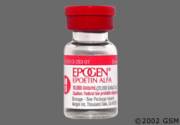Commentary By David Goldfarb, M.D. Professor of Medicine, NYU Medical Center, Chief Nephrology Section VA New York Harbor
 2 weeks ago we reported on 2 lead articles in the New England journal that suggested that our targets for hemoglobin values when treating with erythropoietin were too high.
2 weeks ago we reported on 2 lead articles in the New England journal that suggested that our targets for hemoglobin values when treating with erythropoietin were too high.
Last week, the New York Times reported that based on those NEJM articles (CHOIR and CREATE), the National Kidney Foundation, which publishes the Kidney Disease Outcomes Quality Initiative (KDOQI ), has constituted an advisory group to consider what the guidelines should say about the target hemoglobin. The optimal hemoglobin (whether for CKD and dialysis patients, or anyone with anemia) has still not been determined. The revision of the guidelines this year liberalized the target hemoglobin but in light of these recent data, it seems likely that will be scaled back. The increased mortality rate associated with higher hemoglobin values could be related to the hemoglobin itself, or to deleterious effects of erythropoeitin (e.g. hypertension) or iron (e.g. endothelial oxidative injury).
